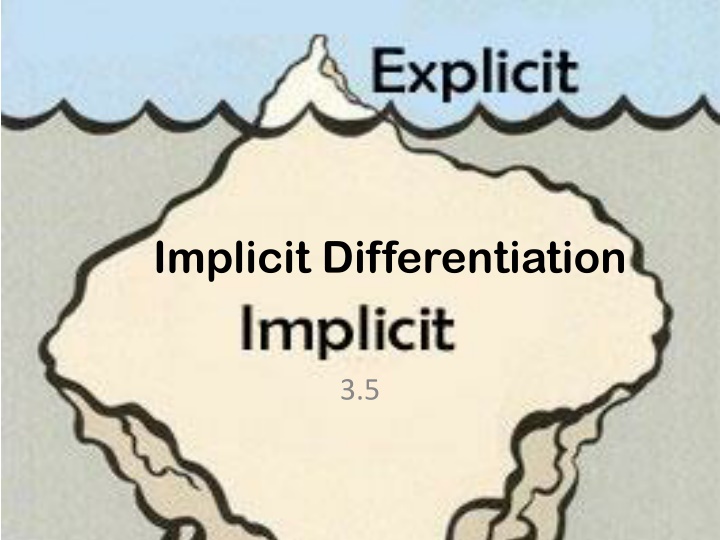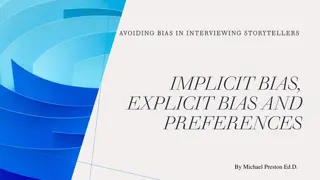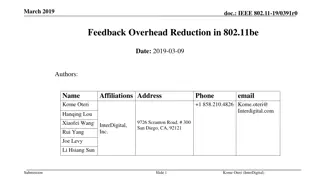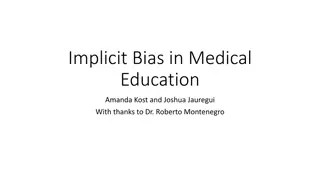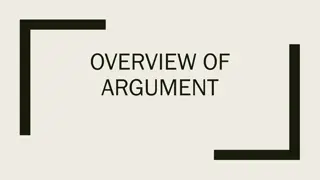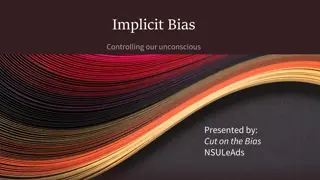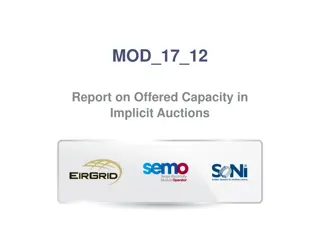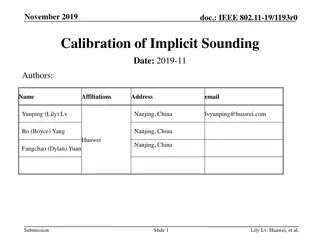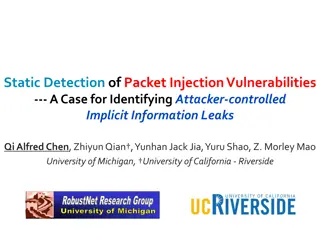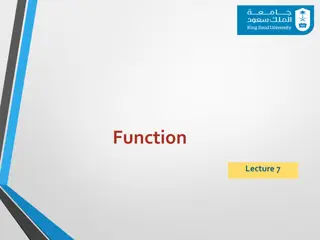Implicit Differentiation in Functions
Implicit vs. explicit functions and learn the steps of implicit differentiation. Understand the challenges in defining implicit functions explicitly and find equations for tangent lines and derivatives. Discover the interplay between variables and rules in differentiation.
Download Presentation

Please find below an Image/Link to download the presentation.
The content on the website is provided AS IS for your information and personal use only. It may not be sold, licensed, or shared on other websites without obtaining consent from the author.If you encounter any issues during the download, it is possible that the publisher has removed the file from their server.
You are allowed to download the files provided on this website for personal or commercial use, subject to the condition that they are used lawfully. All files are the property of their respective owners.
The content on the website is provided AS IS for your information and personal use only. It may not be sold, licensed, or shared on other websites without obtaining consent from the author.
E N D
Presentation Transcript
Explicit vs. Implicit Functions Explicit functions are functions where one variable is clearly expressed as a function of another such as ? = 3?2 5 or ? ? = 2? 6 Implicit functions are only implied by an equation, and may be difficult to express explicitly such as ?2 2?3+ 4? = 2
Explicit Implicit Explicit Vs. Implicit cont. ? =1 ? ?? = 1 ? = ? 1 ? ???? = ? ??[1] ?? ??= ? 2 Using product rule on the left side and and then using chain rule (since y is still a function of x) 1? + ?? ??? = 0 ?? ??= 1 ? + ??? ??= 0 ?2 ?? ??= ? ? Since ? =1 ?, ?? 1 ?2 ??=
Differentiating with respect to x 3?2 3?2?? Variables agree Use power rule ? ???3 ? ??[?3] ?? Variables disagree Use chain rule 1 + 3?? ? ??[x + 3y] Use chain rule ?? 2xy?? Product Rule Chain Rule Simplify ? ??[??2] ??+ ?2
Implicit Differentiation Steps 1) Differentiate both sides of the equation with respect to x. 2) Collect all terms involving ?? the equation and move all other terms to the right side of the equation. 3) Factor ?? ?? out of the left side of the equation. 4) Solve for ?? ?? by dividing both sides of the equation by the factor on the left that does not contain ?? ?? ?? on the left side of
Most implicit functions can not be defined explicitly. If they can be defined explicitly, most of the time you need to restrict the domain. Ex. ?2+ ?2= 1 , the implicit equation of the unit circle defines y as a function of x only, if - 1 x 1 and one considers only non-negative (or non-positive) values for the values of the function.
Find ?? ?3+ ?2 5? ?2= 4 1) Differentiate both sides with respect to x. 2) Collect the dy/dx terms on the left side of the equation. 3) Factor dy/dx out of the left side of the equation. 4) Solve for dy/dx by dividing by (3?2+ 2? 5) ??,given that:
Implicit Curve represented by ?3+ ?2 5? ?2= 4
Graphs of differentiable functions Let s represent each of these equations as differentiable functions that we can graph (if possible) A) ?2+ ?2= 1 B) ?2+ ?2= 0 C) ?2+ ?2= 4 D) ? + ?2= 1
Find the Second Derivative ?2+ ?2= 25
Finding a line tangent to a graph 2 2 ?2?2+ ?2= ?2 at point ( 2, 2)
Determine the slope of the tangent line to the graph Ellipse: ?2+ 4?2= 4 at point ( 2,-1 2) Lemniscate: 3(?2+ ?2) 2= 100xy at (3,1) Find the derivative of Inverse Sinusoidal Curve: sin y = x
Hw Day 1 page 172 1-19 odd, 25, 27, 29, Day 2 35-38, 43-46, 67, 69, 70
Implicit Differentiation Continued You had me until the Lemniscate
Quick Recap Implicit Equations are equations that can be messy to rewrite as functions so sometimes we differentiate first and rewrite as functions later. Mostly this is when we have x and y on the same side and y raised to some exponent
Still Recapping We use the derivative as an operation on each piece of the equation we can. Taking the derivative of an x value with respect to x works normally. Taking the derivative of y values with respect to x we have to use chain rule (ie write dy/dx next to everything) since y is still a function of x. Finally solve the equation for dy dx
Now Back to our Regularly Scheduled Lemniscate Determine the slope of the graph 3(x2+ y2)2=100xy At point (3,1)
Finding a Tangent Line Find the tangent line to the graph of x2(x2+ y2)= y2 At point 2 2 , 2 2 Called a Kappa Curve
Finding the Second Derivative of an implicit equation x2+ y2= 25 Given Find d2y dx2
Logarithmic Differentiation We were able to use logarithmic properties to help us when we were taking the logarithm of a messy function. If we are not already dealing with the logarithm of a function, we can take the logarithm of both sides and use implicit differentiation. y =(x 2)2 x2+1 ,x 2
Steps 1) Take the natural logarithm of both sides 2) Use logarithmic properties to simplify 3) Use implicit differentiation 4) Simplify and solve for the derivative with respect to x 5) Substitute your original equation for y
Find dy/dx for sin y = x Once we have found the derivative we can restrict the domain and doing so find the derivative for arcsin (x).
cosxy =x2 y Screen Shot 2013-11-24 at 2.30.30 PM.png
Hw Page 172 25,27, 32, 34, 35, 37, 43, 45, 67, 69, 70
